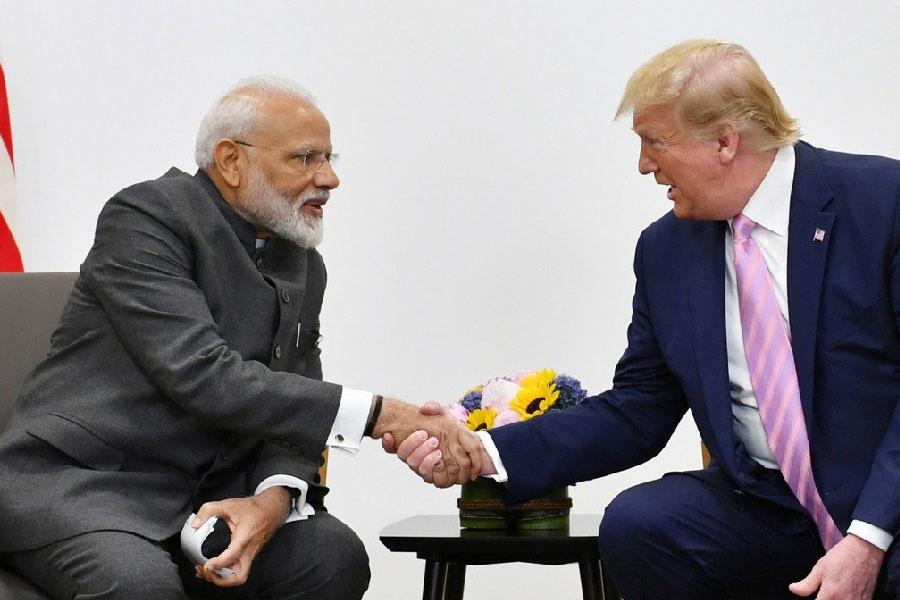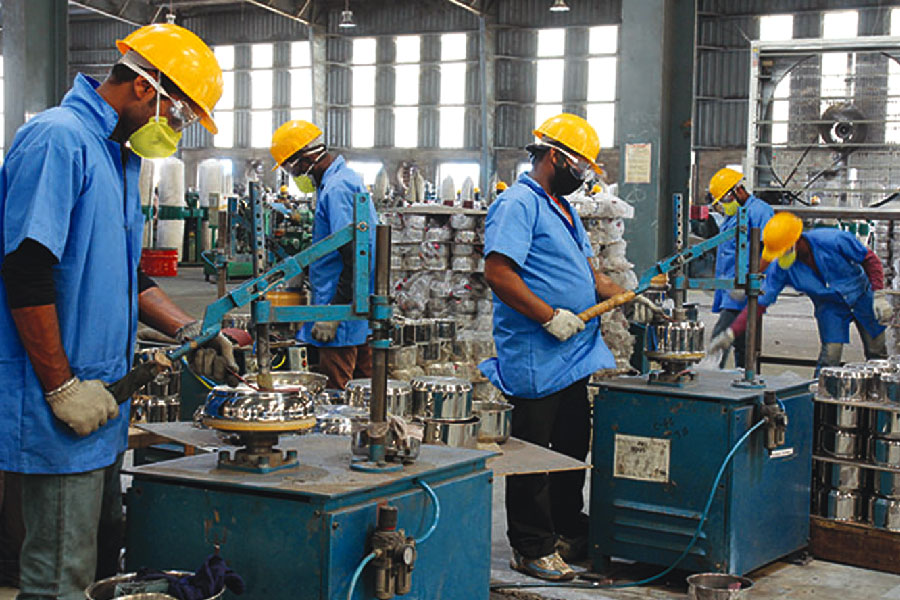Manufacturing firms must focus on automation, innovation & patenting
Dr Arpita Mukherjee, ICRIER, believes that the COVID-19 pandemic has fast tracked the adoption of technology in manufacturing, thereby making it critical for companies to have a high-skilled workforce. She cautions that this is a particularly difficult time for SMEs, who have to struggle for access to financial resources, push policymakers for greater ease of business and plan for major disruptions in the industry landscape.

IBT: In your opinion, what have been the major transformative changes in the global manufacturing ecosystem over the past decade when it comes to factors like use of technology, outsourcing/nearshoring, manufacturing best practices, supply chain management, etc?
Dr Arpita Mukherjee: In the past decade, the development of technology under the fourth industrial revolution has disrupted and revolutionised modes of production. It has led to innovation and emergence of new business models and is transforming global supply chains. Manufacturing has become more automated; requirement of semi-skilled and unskilled labour has reduced, and the requirement of skilled and high-skilled workforce has increased.
Companies from many developed countries, which were outsourcing their manufacturing to developing countries due to cheap labour, can now manufacture at home or closer to home. Many companies are adopting DevOps strategies to shorten the production process, manage their supply chains and ensure just-in-time delivery. Implementation of artificial intelligence and machine learning has helped them to gather information about the production processes, consumers and address production and supply chain-related issues.
Apart from a company’s own business practices, one of the key drivers that determine supply chain and location are the policies and regulations of different countries. For example, ASEAN member states, select provinces of China and developed countries such as Japan, Australia, and many European Union member states are now offering start-up visas to attract start-ups into their markets. They also offer an environment to try out innovations and fast track patent facilities.
Many countries have come up with high technology zones, with significant ease of doing businesses, innovative non-fiscal incentives and WTO compliant subsidies. The other reasons for locating manufacturing facilities include technology acquisition and being closer to their customers.
IBT: How has the competitive landscape between countries transformed in your view, especially considering the rise in prominence of new destinations like Vietnam and Philippines? What factors have driven the choice of destination for investing companies?
Dr Arpita Mukherjee: Earlier ease of doing business, subsides and availability of labour were key factors in determining manufacturing location, but now skills are more important. Subsidies must be WTO compliant and many ASEAN countries have designed their subsidies smartly to make it WTO compliant. Countries such as Vietnam, which have adopted automation, have abundance of labour and have signed several trade agreements are now new manufacturing destination.
In an uncertain global world and current geo-political situation, our survey of European and other foreign companies shows that they want to select countries with which their home country has a comprehensive trade agreement so that they can be secured against trade uncertainties and protectionism. Focusing specifically on Vietnam, with the adoption of technology, when Adidas set up its automated factories to produce sneakers (also known as Speed factories) in Ansbach, Germany, and Atlanta, Georgia, it was thought that manufacturing would relocate out of Vietnam.
However, Vietnam now has a trade agreement with the EU, offers WTO smart subsides/incentives, has successfully addressed COVID-19 and is one of the few countries with growth in the year 2020. Recently, Adidas announced that it will close the two factories in Germany and the US and relocate to Vietnam, to be closer to its customers and reduce shipping costs.

Image credit: https://bit.ly/2PGwZtk
IBT: What are the major positives for India over this decade in terms of evolving as a global manufacturing hub? What are the key areas for improvement?
Dr Arpita Mukherjee: India has significantly improved its ranking in Ease of Doing Business and has come up with the Make in India initiative. Government has focused on skill development and vocational education. There has been improvements in infrastructure, reduction in corporate taxes and the implementation of GST has helped to integrate the domestic market.
On the other hand, the key areas of improvement include policy transparency and certainty; reduction in high logistics costs; removal of barriers to imports of raw materials and establishment of value chains; reduction in cost of borrowing and easier access to finance for SMEs; implementation WTO-compliant subsidies and more innovative non-fiscal incentives like ASEAN countries; non-discriminatory treatment to foreign firms; targeted policies to attract innovative and high-technology firms (like start-up visas) and finally, resisting protectionism and ensuring a transparent policy on data sharing with a trust.
Most importantly, India is a large market and hence policies should focus on boosting demand. Imposing import restrictions without boosting demand will not lead to development of local manufacturing. Policy should help to support growth of high-end manufacturing, which can meet the importing country’s quality standards.
IBT: In what ways has COVID-19 disrupted the manufacturing landscape globally? How are companies responding, and what impact is this expected to have in the near term?
Dr Arpita Mukherjee: COVID-19 has led to disruption in supply chains due to sudden lockouts, imposition of import restrictions, etc. Companies are exploring the possibilities of diversifying their supply chains, de-risking against uncertainties, and some are exploring possibilities of relocating out of China. Countries, which can offer a large domestic market and supporting policies will attract investment.
Companies will look at trade agreements and protectionist measures for deciding investment location, apart from a large market size. Demand for certain products like smart phones, laptops, medicines, PPE kits and processed food will continue to increase until there is a cure for COVID-19, while other sectors are and may continue to face a slowdown.
Countries are likely to continue to be protectionist and global trade & FDI flows have contracted. Overall domestic demand will focus more on essentials and job losses and high unemployment will lead to demand contraction. This has and will continue to slow down growth of manufacturing and services, leading to lower GDP growth unless governments come up with targeted policies to boost manufacturing and demand.
IBT: How are the dynamics of global manufacturing expected to change in the coming decade, especially with the rise of Industry 4.0, automation, technologies like AI, IoT, etc. and the disruptive impact of COVID-19?
Dr Arpita Mukherjee: COVID-19 and requirement of social distancing has fast-tracked the process of adoption of technology and this can become a norm in the future. While it will improve efficiency of firms, unemployment can be a major issue in the near future. Therefore, there is need for skilling of workforce, vocational training courses to start creating workforce for 4IR (Fourth Industrial Revolution). Companies now need to focus on automation, innovation and patenting. Production processes will be data-driven and data analysis will be important for improvement of productivity and efficiency.

Image Credit: https://bit.ly/30KoVy3
IBT: How is this shift expected to pan out for SME firms in particular, and how would they need to adapt?
Dr Arpita Mukherjee: This is difficult time for SMEs across the world. They must be innovative, adopt technology and modernise. At the same time, they need access to finance. Targeted and innovative financial products are needed. SME need to improve productivity and efficiency through better planning and supply chain management. They should work with the government through their associations for reduction in logistics and other inputs costs and for more sophisticated products and services for digital financial inclusion.
They also need to understand the future labour requirements, identify gaps and skills requirements. Focusing on subsidies alone will not help them to be globally competitive. They need to push for ease of doing business, reduction in bureaucratic controls and streamlining of supply chains and logistics networks. Following global best practices and standards will help them to compete and enhance exports.
IBT: How well placed is India for this shift? What major steps are needed to capture a greater share in global manufacturing (production and trade) in the post-COVID era?
Dr Arpita Mukherjee: Indian companies can be made ready for the shift through right policy support. India has strengths in innovation and IT/ITeS services. However, manufacturing is more labour incentive and large part of the workforce is unskilled or semi-skilled. Skilling of workforce should be a priority.
If India does not impose trade protectionism, it can attract manufacturing and services FDI. The focus should be on reviving GDP growth and boosting demand, this will in turn lead to growth of manufacturing. It is important to explore trade agreements with key export markets such as the EU, UK and the USA.
Any measures that lead to trade retaliation should be avoided and this is the right time to design WTO-compliant subsides and have a package of non-fiscal incentives, which helps to reduce logistics costs and improve ease of doing business.
Government clearances should be online and fast tracked and regulatory hurdles should be removed. To have a greater share in global manufacturing, India needs to remove supply chain bottle necks like restrictions on FDI in retail, have smart policies for industry clusters and special economic zones and give them benefits comparable to ASEAN countries, and implement labour reforms.
Cost of borrowing should be lower and there should be plans for digital financial inclusion of targeted groups like SMEs and youth. Entrepreneurships, start-ups and innovation should be encouraged through targeted policies.
Dr Arpita Mukherjee is a Professor at ICRIER. She has several years of experience in policy-oriented research, working closely with the Government of India and policymakers in the EU, US, ASEAN and in East Asian countries. She has conducted studies for international organizations such as ADB, ADBI, ASEAN Secretariat, FCO (UK), Italian Trade Commission, Konrad-Adenauer Stiftung (KAS), OECD, Taipei Economic and Cultural Centre (TECC), UNCTAD and the WTO and Indian industry associations such as NASSCOM, FICCI, IBA, IDSA and EICI. Her research is a key contributor to India’s negotiating strategies in the WTO and bilateral agreements. The views expressed here are her own. Usual disclaimers apply.













Leave a comment